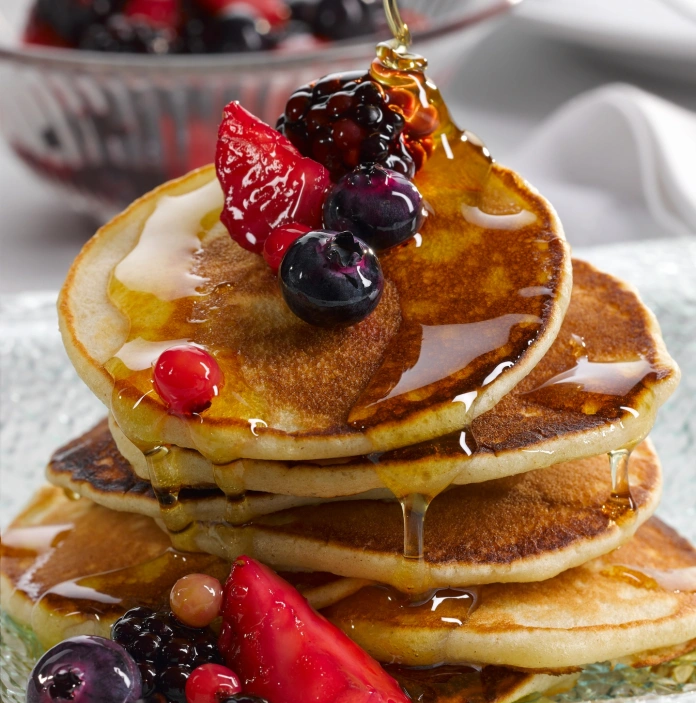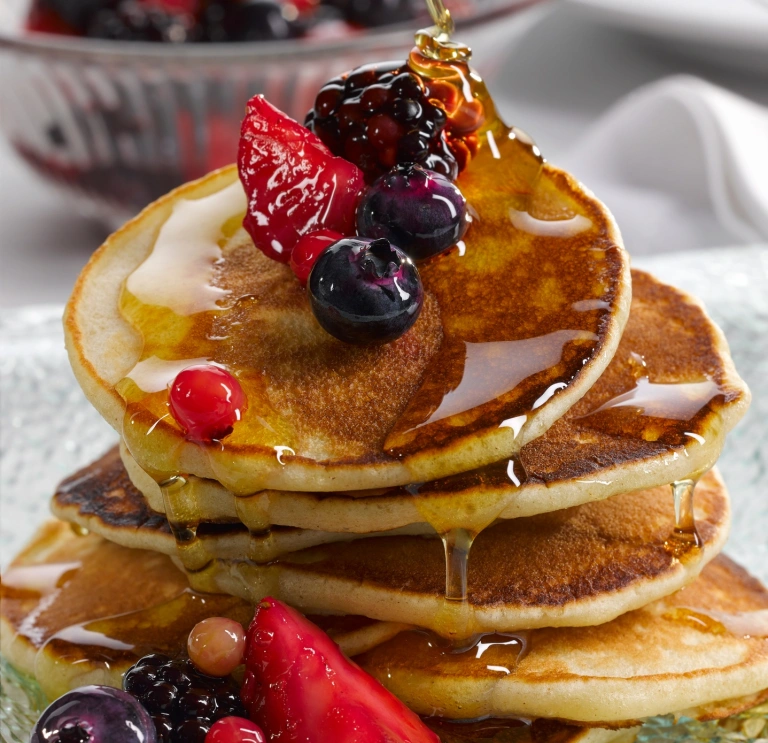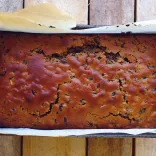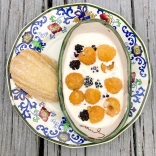The French have crepes, the Americans have their pancakes and we Welsh have our crempogau. Appearing as a cross between the two (thicker than a crepe but smaller than an American pancake), they’re traditionally made from self-raising flour, salt, eggs, milk and butter and stacked in a pile that can be sliced like a wedge of cake.
Wales has a long history of baking sweet treats on a griddle or bakestone (which is also how we make our iconic Welsh cakes!), and, traditionally, crempogau (or a crempog, singular) would have been made in the same way, placing batter on a hot bakestone until it turns golden brown – though today a frying pan serves as a more common substitute.
Welsh pancakes had different names in various regions of Wales (ffroes in Glamorgan, poncagau in parts of Ceredigion), but have a strong link to the beautiful Llyn Peninsula, where a Shrove Tuesday tradition saw local children going from house to house singing: Sgwelwch chi’n dda ga i grempog? Mae ‘ngheg i’n grimpin grempog! (Please may I have some pancakes? My mouth is parched for pancakes!). The pancakes can be served with a variety of toppings including sugar, honey and fruit, as well as in a savoury format.
When is it eaten?
Crempogau are a sweet treat enjoyed throughout the year. However, the delicacy takes centre stage during Shrove Tuesday, aka Pancake Day, the date in early spring that preludes the Christian fasting period of Lent. On this date, Christians would, traditionally, have made pancakes to use up the foodstuffs often given up during Lent (such as sugar, butter and eggs). Though no longer necessarily tied to its religious roots, the culinary convention remains popular across Wales today.
Notes from the chef
Leaving the batter to rest before cooking is highly recommended as the reaction between the baking powder and the acidic buttermilk and vinegar takes a little while to kick in, which is what creates the bubbles and results in a fluffier crempog.
Feel free to play with the suggested ratios depending on your personal preference: more flour to buttermilk will result in a thicker mix and so it will spread less in the pan resulting in a thicker crempog. However, too much flour and your pancakes will be too dense.
Also, don’t fret if you can’t find buttermilk. You can replace it with a mixture of 300ml of live yoghurt and 100ml of milk.

How to make Welsh crempogau
Serves: 4 | Prep time: 10 minutes (plus extra for batter to rest) | Cook time: 15 minutes
Ingredients
260g self-raising flour
65g sugar
1 tsp baking powder
½ tsp salt
2 eggs
400ml buttermilk
40g butter, melted and cooled, plus extra to cook with
2 tsp cider vinegar or lemon juice
Method
Step 1: In a large bowl mix together all the dry ingredients. Make a whole in the middle and beat in the two eggs, followed by the buttermilk, then the butter and the vinegar. Whisk until it becomes a smooth uniform batter
Step 2: Leave the batter to rest for 20 minutes. While waiting, preheat the oven to its lowest setting so you can keep the crempogau warm (after cooking them) as you will need to do a few batches.
Step 3: Preheat your chosen pan on the hob on a medium heat: a bake stone would have traditionally been used to cook crempogau but a heavy based non-stick frying pan or flat griddle pan work nicely.
Step 4: Add a small knob of butter to the pan and spread it around. Now drop tablespoons of batter into the pan but do not overcrowd or it’ll be difficult to flip.
Step 5: Cook for approximately 2-3 minutes on each side, you will notice fine bubbles appearing on the surface as it becomes ready to flip. A golden colour is what you are aiming for, but do not be tempted to press down as you flip or you will knock out the air! Place on a plate in the prewarmed oven as you cook the remaining batter.
Step 6: Once nicely stacked up, crown your crempogau with your chosen toppings, be it fruit and yoghurt or a thick slathering of salted butter and PGI-protected Welsh heather honey – delicious!
This recipe was researched and tested by chef Alex Vines. Alex developed his signature “simple yet attentive” cooking style during a decade working in renowned London restaurants. Originally from Cardiff, Alex champions the use of seasonal and local produce, mirroring the principles of traditional Welsh recipes. Follow Alex on Instagram.




